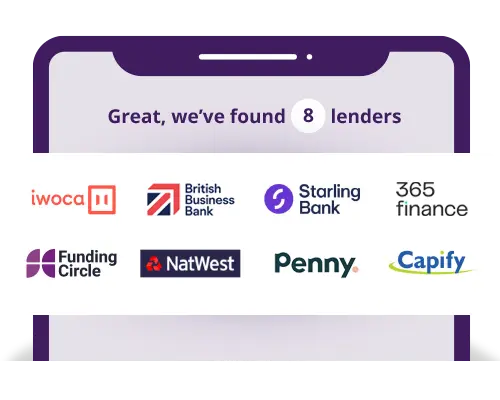Starting a business always comes with an element of risk. Leaving the comfort and relative stability of full-time employment for business ownership can be daunting — but 42% of UK workers dream of someday owning their own business.
If you’re part of the 64% considering stepping out on your own or you’ve already started your business, it’s important to understand the common risks that come with running a business and how to minimise them.
This blog explores the types of business risks you should know and shares strategies for reducing business risk.
What is business risk?
Business risk can be internal or external threats to business finances and performance. Types of business risks can include:
- Financial: poor cash flow management or investment decisions
- Legal: not filing your tax returns correctly, leading to penalties or fines, or not complying with industry standards
- Market: product demand, high competition and changing economic conditions
- Reputational: poor employee experience or other negative publicity
- Operational: supply chain disruptions, data breaches or broken equipment
As you can see, risk can seep into all aspects of your business, and all these risks can seriously impact your bottom line — not just in the immediate future; some can have long-term consequences, sometimes leading to bankruptcy.
6 strategies to mitigate business risk
Although you can’t completely eliminate all risks in business, you can implement several risk management strategies to protect your company as much as possible. So, should the worst happen, you’re adequately prepared.
1. Better manage cash flow
You struggle to meet your financial obligations without good cash flow — debt repayments, staff wages, refilling stock, investing in marketing campaigns, etc. You need good cash flow to operate your business efficiently. Cash flow strategies can include:
- Invoice on time and chase for payment. Late invoice payments can have a knock-on effect on your financial pipeline. When customers pay invoices late, you can find yourself in a tricky situation. Invoice on time and give discounts for early invoice payments.
- Increase your prices. A great way to increase your cash inflows is to remodel your pricing strategy and charge more.
- Accurately forecast cash flow. Cash flow forecasting is crucial to understanding your financial situation for the short term and into the future. This information lets you plan for future success, i.e. cut back on expenses and renegotiate supplier contracts.
- Tightly control costs. Keep tabs on what employees are spending and on what. Introduce corporate card spending limits and digital expense tools to improve accountability and create expense policies to better control how your business funds are spent and by whom.
- Lease equipment instead of buying. Leasing business equipment means you’re not paying out a lump sum of your cash reserves. Instead, you’re paying for the equipment in affordable monthly instalments.
2. Get adequate business insurance
Being properly insured means you’re protected against legal ramifications. Let’s say someone gets hurt by a product you sell, or you’re the victim of malicious cyber crime or data breaches. The right insurance protects you against any legal costs, pays out the compensation you owe, and provides access to experts who advise you on the next steps.
3. Write a business plan
Writing a business plan not only gives you focus, but the process of writing it means you research your industry, understand market seasonality, analyse the competition and build a framework for growth.
If you’re hoping to secure investment for your business in the near future, investors will expect to see a business plan. By looking at your business plan and other elements of your business, the investor can determine whether the business is a sound investment.

4. Choose business finance carefully
Applying for a business loan can be a great way to manage your cash flow and increase your working capital to invest and drive business growth. But if you don’t go into it with your eyes open, you can find yourself stuck in a cycle of debt. It’s easy to find yourself in this cycle when you apply for business credit cards or other revolving credit facilities.
Before applying, consider asking your friends or family members for a loan instead. This loan will come with much lower interest rates (or perhaps none at all!), and you do not owe money to a bank, risking your assets or business reputation.
If you don’t have friends or relatives to lean on, carefully compare your loan options. Do you have an asset to put up as collateral? Consider all the risks and rewards of a business loan before signing on the dotted line.
5. Seek professional advice
If you’re unsure how to pay corporation tax or you don’t understand your obligations as a company director, seek professional advice from an accountant. Accountants can help you navigate your tax return to minimise any tax compliance issues. So, reduce your risk of non-compliance with HMRC and seek the advice of a professional tax accountant.
If you’re unsure of your employee obligations, seek advice from HR professionals and likewise with legal advice — contact a solicitor. Not only can you waste significant time trying to wrap your head around legal jargon and official documentation, but non-compliance in all these areas can lead to fines or legal action, increasing your business risk.
6. Understand your audience
Creating buyer personas is an exercise that will help you understand your audience in granular detail. Although you have made a business plan to understand your market, how to price your products and services and have a financial forecast, understanding your audience is a significant piece of the puzzle.
Take the time to understand where your audience hangs out online, how you’re best marketing to them, what messages resonate with them, etc. It can help you out when creating marketing campaigns. Remember, marketing to everyone means you’re appealing to no one! So hone in on your audience and keep learning new things about them and their motivations to buy.
Before you go
The rewards of business ownership can be great if you can calculate your risk and take reasonable steps to protect yourself and your business.
If you’re looking to grow your business quickly and don’t have the cash reserves to invest, we can help you find and compare business loan options. We work with various UK lenders, offering affordable, flexible financing options for businesses of all sizes — from startups to established ones.
Our free loan comparison tool is quick and easy to use. Get your quote today.






